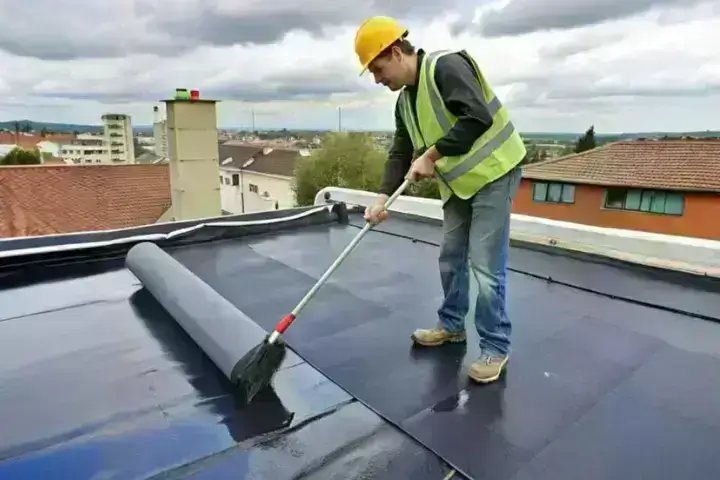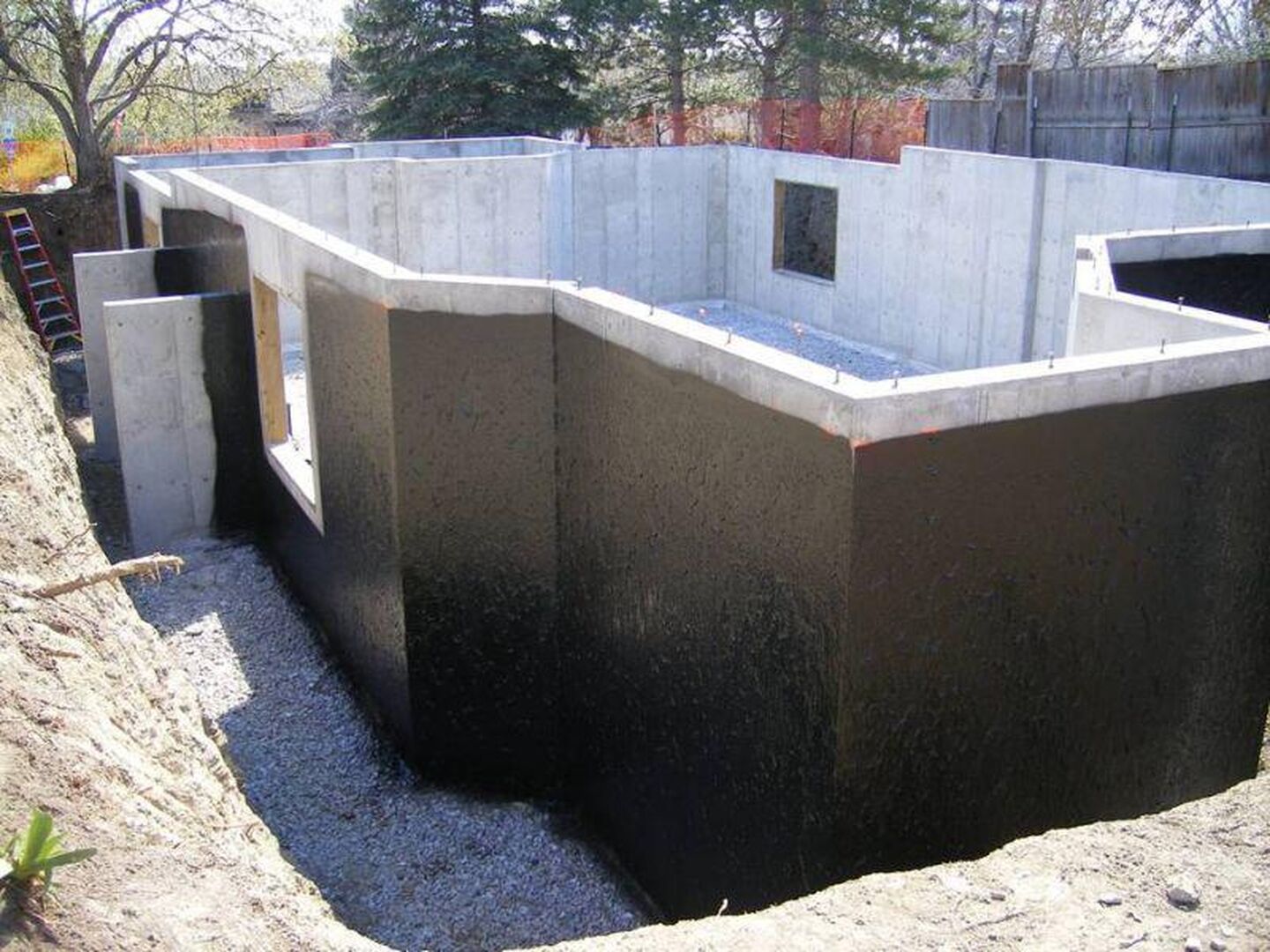How Waterproofing Functions: A Thorough Consider Methods and Technologies
Waterproofing is essential for securing structures from moisture-related damages. It entails different strategies and innovations that develop obstacles versus water intrusion. Conventional approaches, such as compressed clay, coexist with modern-day technologies like liquid-applied membrane layers. Recognizing the subtleties of these methods is crucial for effective application. Nevertheless, the efficiency of any type of waterproofing option hinges not just on the methods used but additionally on continuous maintenance and evaluation. What are the crucial factors that affect long-lasting performance?
Recognizing the Essentials of Waterproofing
Waterproofing is a necessary process that shields structures from water breach, which can result in substantial damage gradually. This method includes the application of various products and strategies designed to produce an obstacle against wetness. The key goal is to stop water from penetrating surfaces, which can trigger deterioration, mold development, and architectural instability.Various elements influence the selection of waterproofing method, including the sort of framework, its location, and environmental problems. Comprehending the physics of water activity and the residential or commercial properties of various products is critical in selecting an efficient waterproofing solution.Effective waterproofing not just safeguards buildings but likewise improves their durability and honesty. Generally, it is integrated into the style phase of building and construction to assure extensive security. As recognition of water-related issues grows, the significance of comprehending waterproofing principles comes to be increasingly clear to designers, building contractors, and home proprietors alike.
Conventional Waterproofing Techniques
Typical waterproofing approaches have actually been utilized for centuries, counting on reliable strategies and materials to secure structures from water damage. Among the earliest techniques involves the usage of clay, which, when compacted, creates an all-natural obstacle against dampness. Furthermore, bitumen, a sticky, black product stemmed from petroleum, has been employed for its waterproof homes, frequently related to roof coverings and foundations.Another method involves the application of lime-based plasters, which give a breathable layer that enables moisture to run away while stopping water ingress. Thatch roof covering, a standard method still seen in some societies, uses outstanding waterproofing due to its securely packed straw layers.Moreover, using stone and block has projected, as these products are naturally immune to water when appropriately set up. In general, traditional waterproofing approaches stress the importance of picking appropriate products and construction techniques to improve toughness against water intrusion.
Modern Waterproofing Technologies
Improvements in modern waterproofing modern technologies have reinvented the means structures are shielded from water damage. Ingenious methods such as liquid-applied membrane layers and advanced sealants have boosted the effectiveness and convenience of waterproofing remedies. These technologies enable smooth application, lowering the risk of leaks and guaranteeing detailed coverage over complex surfaces.Moreover, the combination of wise modern technologies, such as moisture sensors and automated monitoring systems, allows real-time evaluation of waterproofing efficiency. This aggressive strategy helps with timely maintenance and reduces long-term repair costs.Additionally, developments in spray-applied finishings use fast application and exceptional bond, adapting to different substrates while offering robust protection. Strategies like polymer-modified systems further enhance versatility and longevity, making them ideal for varied atmospheres. In general, modern waterproofing technologies not just minimize water invasion however also add to the longevity and sustainability of frameworks, noting a considerable shift in the industry.
Products Made Use Of in Waterproofing
The performance of waterproofing options heavily depends on the materials made use of in their application. Numerous products are used to develop barriers versus water ingress, each with special homes fit for various atmospheres. Frequently used materials include membranes, coatings, and sealants.Liquid-applied membranes, typically made from polyurethane or acrylic, form a seamless barrier that adapts to intricate surfaces. Sheet membrane layers, commonly built from rubber or thermoplastic, offer durability and are excellent for bigger locations. In addition, cementitious waterproofing materials, composed of cementitious compounds, give outstanding bond and flexibility.Sealants made from silicone or polyurethane are essential for joints and seams, making certain comprehensive defense. Moreover, sophisticated products, such as geo-composite membrane layers, combine multiple functions, boosting efficiency. On the whole, the selection of waterproofing materials is important in accomplishing resilient and effective water resistance, tailored to certain project requirements and environmental problems.
Usual Applications of Waterproofing
Waterproofing plays a vital function in different sectors, guaranteeing the durability and honesty of frameworks. Common applications include property options that safeguard homes, commercial infrastructure that safeguards companies, and commercial setups that call for durable security against wetness. Comprehending these applications highlights the significance of waterproofing in preserving both safety and performance across different atmospheres.
Residential Waterproofing Solutions
Lots of house owners deal with obstacles with dampness breach, making efficient property waterproofing options crucial. Numerous techniques exist to address this concern, consisting of inside and exterior waterproofing systems. Inside options commonly involve the application of sealants and coverings to cellar wall surfaces, which help visit this site stop water seepage. Exterior approaches normally include the installment of drain systems and water-proof membrane layers that draw away water far from the foundation.Additionally, house owners may think about sump pumps to remove water build-up and dehumidifiers to regulate humidity degrees. Proper grading and using gutters likewise play a vital role in taking care of water flow around the home. By carrying out these strategies, house owners can greatly minimize the threat of water damage and mold development, ensuring a dry and risk-free living setting.

Industrial Facilities Protection
Reliable waterproofing services play an important role in the defense of industrial facilities. Basement waterproofing Omaha. These strategies are vital for safeguarding buildings, parking frameworks, and bridges from water damage, which can jeopardize structural honesty and result in costly repair work. Common applications consist of the installation of membrane layers, coverings, and sealers that create barriers versus moisture infiltration. Locations such as cellars, roofing systems, and outside walls are often focused on to assure longevity and resilience. In addition, waterproofing systems can improve energy performance by avoiding water-related issues that may bring about mold and mildew development and deterioration. By executing robust waterproofing steps, residential or commercial property owners can safeguard their investments and maintain operational efficiency, ultimately adding to the total sustainability of business centers
Industrial Applications Introduction
While numerous markets face special difficulties, the demand for trustworthy waterproofing solutions stays a constant in industrial applications. Industries such as production, construction, and power frequently run into environments where moisture direct exposure can jeopardize structural honesty and operational efficiency. In producing centers, waterproofing is vital for shielding machinery and materials from water damages. In construction, it safeguards structures and cellars versus groundwater seepage. The energy industry relies upon waterproofing for the protection of devices in hydroelectric plants and overseas frameworks. In addition, food processing markets make use of waterproofing to assure hygiene additional reading and compliance with safety and security standards. bathroom water proofing Generally, reliable waterproofing solutions are vital for enhancing durability, security, and efficiency throughout various commercial settings.
Upkeep and Durability of Waterproofing Solutions
Although waterproofing remedies are developed to offer long-lasting protection against dampness intrusion, routine upkeep is crucial to assure their performance and longevity - Water Solutions. Routine assessments play a considerable role in identifying possible problems such as fractures, peeling, or indicators of water damages. Addressing these troubles immediately can avoid further damage and pricey repairs.Additionally, cleansing the surface area of waterproofed areas helps eliminate dirt and particles that could compromise the honesty of the waterproofing obstacle. It's additionally advisable to reapply protective finishes or sealers as recommended by makers to keep ideal performance. Environmental aspects, such as UV exposure and severe weather, can impact the lifespan of waterproofing materials, making regular assessment vital
Frequently Asked Inquiries
Can Waterproofing Be Applied in Cold Climate?
The concern of applying waterproofing in winter increases worries about adhesion and curing. Several products might not do at their ideal in reduced temperatures, necessitating careful option and consideration of details guidelines for reliable application.
For How Long Does Waterproofing Typically Last?
The period of waterproofing efficiency differs based upon materials and environmental elements. Normally, it can last from 5 to 10 years, but regular maintenance and assessments are vital to guarantee peak performance and durability.
Is Do It Yourself Waterproofing Effective and Safe?
The performance and safety and security of DIY waterproofing depend upon different aspects, consisting of worldly quality and application method. While some people achieve satisfying results, others may experience problems that jeopardize long-lasting security and structural stability.
What Are the Indicators of Failing Waterproofing?
Indicators of falling short waterproofing consist of noticeable water spots, peeling off paint, mold growth, mildewy smells, and dampness in walls or ceilings - Drainage & waterproofing company Omaha. These indications recommend endangered obstacles, necessitating prompt assessment and possible remediation to stop further damage
How Do I Select the Right Waterproofing Service Provider?
